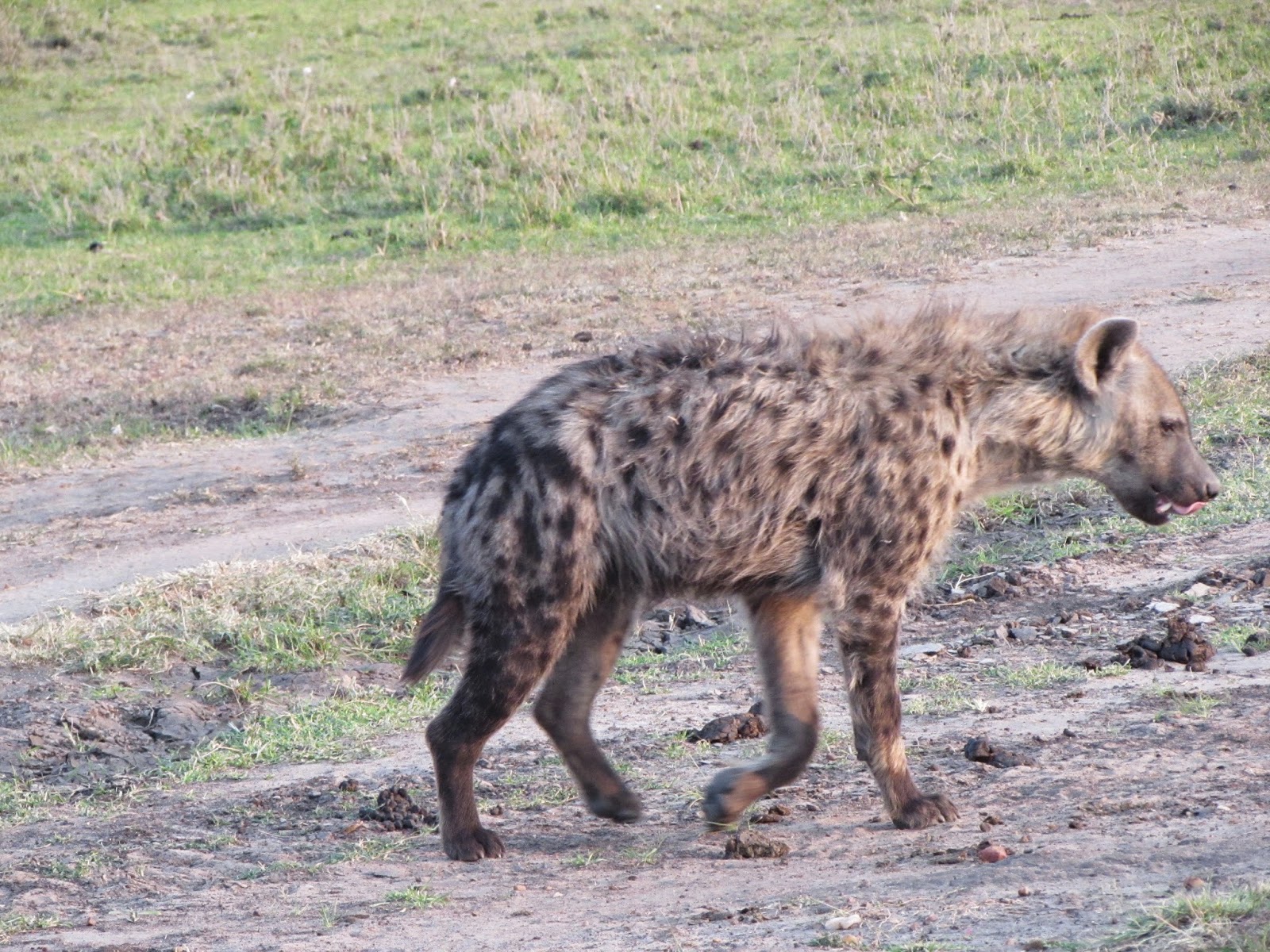An obs session that starts with two
little black figures poking out from the den usually means new cubs spotted in
the Talek West clan! With new cubs come new tasks for the researchers here at
Fisi camp. Not only do we have to identify the mother of the cubs; we also are
presented with the task of aging them. The pattern and visibility of spots on a
hyena is not only helpful when it comes to identifying an individual but it’s
also a great tool for estimating age. With each new cub comes a puzzle, and as
researchers we must put the pieces together in order to solve the mysteries of
motherhood and age.
Determining the mother of a cub can
be a more tedious process than one would think. Since we do not observe the
adult females giving birth we use the act of nursing as a “maternity test”. When
we see a cub nursing from a female, we can usually conclude that that female is
the mother. Although there have been instances of a cub nursing from two
different females it has not been observed very often. This situation however can make this process
even more daunting. When a cub is first seen above ground we aim to see the cub
nursing a couple of times from the same female to have some certainty of the
identity of the mother.
Now onto the subject of aging, when
hyenas are first born they are all black and no spots are visible. The age at
which we first see a new hyena cub however ranges. Some adult females,
especially those who are lower ranking will not bring their cubs to the
communal den until they are a couple of months old. The features of a hyena’s
fur change significantly within the first few months. In order to age cubs we
use a few key characteristics found on their bodies.
Here are a few stages:
A cub that is all black and seen
above ground near the den can be 3 to 4 weeks old.
In the next stage, the cubs begin
to develop white rings around their eyes, which eventually leads to the
development of white eyebrows and faces. The white rings begin to appear at
about 4 to 5 weeks old and white eyebrows and faces at 5-6 weeks.
Another section of the body that we
use to denote age is the shoulder. Spots begin to emerge on the shoulders at 3-
3 ½ months. The white face is also still present at this stage.
As the hyena cub gets older more
spots begin to appear. Instead of just seeing spots on the shoulder there are
also spots along its sides and back. The legs of the cubs however may remain
black. The fur is also short. If a cub has these characteristics it would be
put in the age range of 4-7 months.
At around 8-9 months, the cub’s fur
becomes fluffy and long also known as den graduation fur. The cub begins to molt (the transition from
short fur to long fluffy fur). These are some of the last characteristics we use
to determine age.
After determining what stage the
hyena is in, we count backwards to determine its birthdate. For example, if it
was December 10th and we saw a hyena for the first time with a white face and
spots on the shoulder we would count back three months and give it a birthday
of October 10th. Age is not
only important in determining the birthdate of a hyena but it also gives us
clues as to when a hyena should be graduating the den, dispersing, or having a
litter of their own. While new cubs at the den create a new mystery for the
researchers solve it also brings excitement and cuteness to the den.
Try and age the hyenas below! Come
back to the blog for my next post to see if your estimates were correct.
























